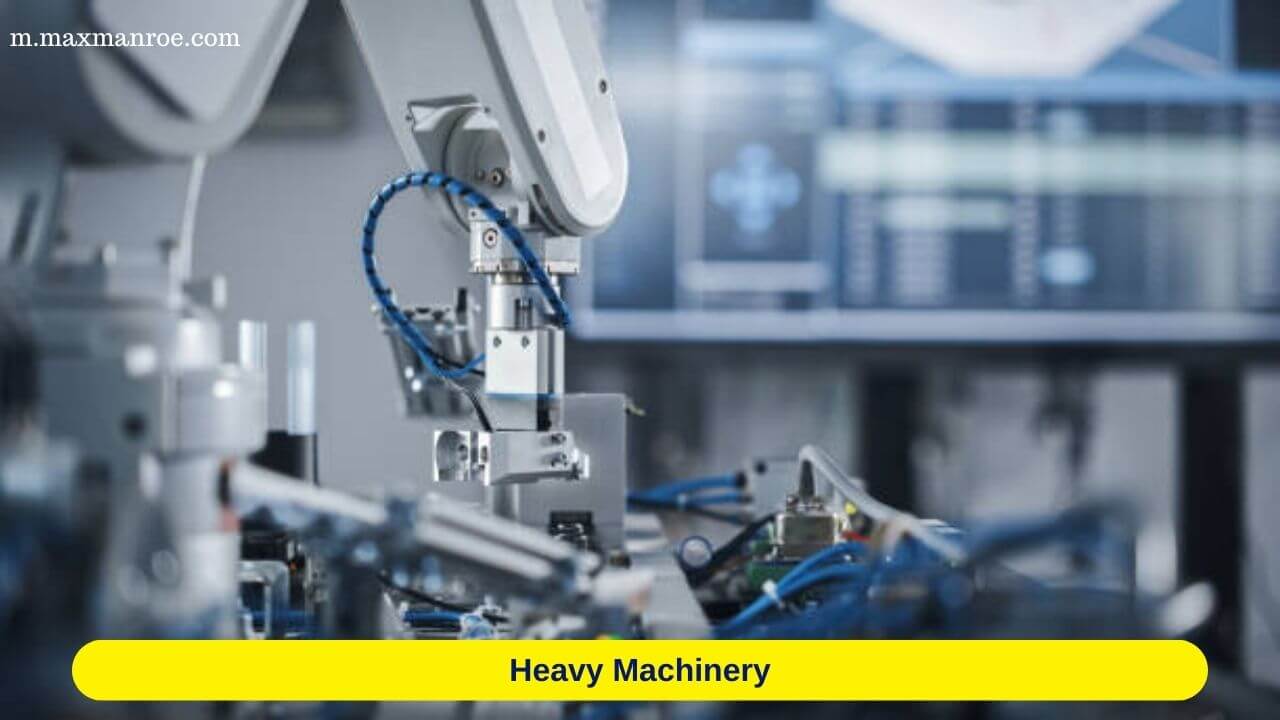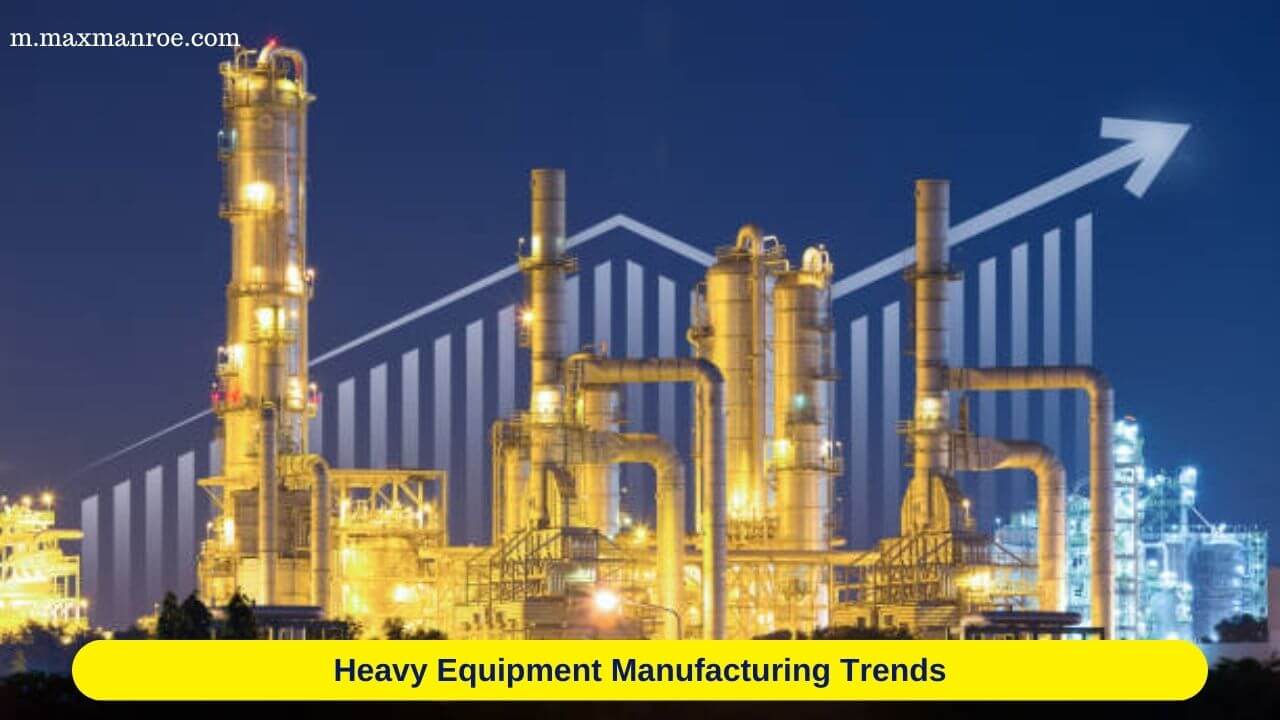Heavy Equipment Manufacturing Trends is witnessing a significant trend towards increased automation and digitization, with the integration of technologies like IoT and AI to enhance operational efficiency.
Sustainability is a paramount focus in heavy equipment manufacturing trends, driving the development of eco-friendly machinery through the use of advanced materials and energy-efficient design.
Telematics is playing a crucial role in transforming heavy equipment, enabling real-time monitoring and data-driven insights for predictive maintenance, reduced downtime, and optimized performance.
Customization and modular design are gaining prominence, allowing manufacturers to tailor heavy machinery to specific industry needs while streamlining production processes.
Collaboration within the industry is increasing, with heavy equipment manufacturers partnering with technology companies to leverage expertise in software development, connectivity solutions, and data analytics for continued innovation.
Heavy Machinery

Heavy machinery plays a pivotal role in various industries, ranging from construction and mining to agriculture and manufacturing.
These robust and powerful machines, such as excavators, bulldozers, cranes, and loaders, are essential for undertaking tasks of immense scale and complexity.
Recent trends in heavy machinery highlight a growing integration of advanced technologies, such as GPS, telematics, and automation, to enhance precision, efficiency, and safety in operations.
The demand for more sustainable and eco-friendly heavy machinery has also spurred innovation, with manufacturers focusing on developing equipment that minimizes environmental impact.
Whether reshaping landscapes, lifting heavy loads, or powering industrial processes, heavy machinery remains indispensable for modern infrastructure development and economic growth, constantly evolving to meet the challenges and expectations of the ever-changing industrial landscape.
Read More: Textile Machinery Manufacturers Guide 101: Types, Uses & Advancements in 2024
Heavy Equipment Manufacturing Trends

The heavy equipment manufacturing sector is undergoing a profound transformation, spurred by technological advancements, changing consumer demands, and a heightened focus on sustainability.
This article delves into the key trends shaping the landscape of heavy equipment manufacturing and explores the broader horizon beyond current innovations.
Automation and Digitization
One of the paramount trends in heavy equipment manufacturing is the increasing integration of automation and digitization.
Manufacturers are harnessing the power of advanced technologies, such as the Internet of Things (IoT), Artificial Intelligence (AI), and machine learning, to usher in a new era of efficiency and productivity.
Automation is not only streamlining manufacturing processes but is also being incorporated into heavy machinery itself, enabling autonomous operations in various industries.
As heavy equipment becomes smarter, it can adapt to dynamic working conditions, optimize fuel consumption, and enhance overall performance.
The utilization of sensors and connectivity solutions allows for real-time monitoring of equipment health, facilitating predictive maintenance strategies.
This shift towards automation not only improves operational efficiency but also reduces the reliance on manual labor, ultimately contributing to safer working environments.
Sustainability in Heavy Machinery
A significant paradigm shift is occurring in the heavy equipment manufacturing industry towards sustainability.
With increasing environmental concerns and stringent regulations, manufacturers are reevaluating their practices to develop eco-friendly and energy-efficient machinery.
Sustainable heavy machinery involves not only the end product but also the entire manufacturing process.
Innovative materials and design approaches are being adopted to reduce the environmental footprint of heavy equipment.
Lightweight materials, alternative fuels, and advanced emission control technologies are becoming standard features in the quest for greener machinery.
Additionally, manufacturers are investing in research and development to explore renewable energy sources and hybrid technologies that can power heavy equipment with reduced environmental impact.
Telematics for Enhanced Performance
Telematics, the integration of telecommunications and informatics, is making significant inroads in the heavy equipment manufacturing sector.
This technology involves the use of GPS systems and onboard diagnostics to collect and transmit real-time data about the equipment’s performance, location, and operating conditions.
Telematics offers a wealth of information that can be utilized for improving efficiency, reducing downtime, and enhancing overall productivity.
The adoption of telematics in heavy equipment facilitates predictive maintenance, allowing manufacturers and operators to address potential issues before they escalate into costly breakdowns.
It enables a more proactive approach to equipment management, leading to optimized maintenance schedules, reduced operational costs, and extended equipment lifespan.
Moreover, telematics supports data-driven decision-making, empowering manufacturers to refine their designs and processes based on actual performance metrics.
Customization and Modular Design
Customization and modular design have become focal points in heavy equipment manufacturing trends.
The diverse needs of industries and customers require flexibility in equipment design and functionality.
Manufacturers are responding by developing modular systems that can be easily customized to meet specific requirements.
The modular approach not only allows for greater versatility in the application of heavy machinery but also streamlines the manufacturing process.
Components can be standardized, leading to faster production cycles and reduced lead times.
This trend is particularly relevant in industries where equipment needs vary widely, such as construction and agriculture.
Customization and modularity are empowering manufacturers to deliver tailored solutions while maintaining efficiency in production.
Collaboration and Partnerships
In an era of rapid technological evolution, collaboration has emerged as a key trend in heavy equipment manufacturing.
Traditional manufacturers are increasingly partnering with technology companies, startups, and research institutions to leverage expertise in areas such as software development, connectivity solutions, and data analytics.
This collaborative approach accelerates innovation and helps manufacturers stay at the forefront of industry advancements.
By collaborating with tech-savvy partners, heavy equipment manufacturers can integrate cutting-edge technologies into their products more seamlessly.
This trend not only fosters innovation but also enhances the industry’s ability to address complex challenges.
Joint ventures and partnerships also facilitate knowledge exchange, enabling manufacturers to stay abreast of emerging trends and market demands.
Beyond Current Trends

Looking beyond the current trends, several factors are poised to shape the future of heavy equipment manufacturing.
Artificial Intelligence and Machine Learning Integration:
The integration of Artificial Intelligence (AI) and machine learning is expected to become more sophisticated, offering heavy equipment the ability to learn and adapt autonomously.
AI algorithms can analyze vast datasets to optimize performance, predict maintenance needs, and enhance overall efficiency.
As computing power continues to advance, heavy machinery will likely become more intelligent, self-diagnosing, and capable of adapting to evolving work environments.
Advanced Materials and 3D Printing
The quest for lighter, stronger, and more durable materials is an ongoing pursuit in heavy equipment manufacturing.
Advanced materials, such as composite alloys and high-strength plastics, are being explored to improve the structural integrity of equipment while reducing weight.
Additionally, 3D printing technology is gaining traction, offering the potential to revolutionize the manufacturing process by creating intricate components with increased precision and efficiency.
Electrification and Alternative Fuels
The shift toward electrification is a transformative trend that is expected to redefine the power sources for heavy machinery.
Electric-powered heavy equipment, including construction machinery and mining vehicles, is gaining attention as advancements in battery technology and charging infrastructure continue.
Furthermore, the exploration of alternative fuels, such as hydrogen and biofuels, is likely to play a pivotal role in reducing the environmental impact of heavy machinery.
Human-Machine Collaboration
While automation is on the rise, the future of heavy equipment manufacturing may involve a more harmonious collaboration between humans and machines.
Augmented reality (AR) and virtual reality (VR) technologies are poised to enhance operator training, making heavy machinery more accessible and easier to operate.
Human-machine collaboration may lead to safer and more efficient work environments, where skilled operators work alongside intelligent machines to achieve optimal results.
Circular Economy Practices
The adoption of circular economy principles is anticipated to become more prominent in heavy equipment manufacturing.
This involves designing products with a focus on longevity, repairability, and recyclability.
Manufacturers may increasingly adopt remanufacturing and refurbishment practices, extending the lifespan of equipment and reducing the overall environmental impact.
Embracing a circular economy approach aligns with sustainability goals and promotes responsible resource management.
Read More: Crane Operator Training and Certification
Conclusion
The heavy equipment manufacturing industry is in the midst of a dynamic evolution, marked by automation, sustainability, connectivity, and collaboration.
As technological advancements continue to shape the sector, the future promises even more transformative changes.
From the integration of AI and advanced materials to electrification and circular economy practices, heavy equipment manufacturing is on a trajectory toward a more efficient, sustainable, and technologically advanced future.
Navigating these trends and embracing innovation will be key for manufacturers to stay competitive and contribute to a more resilient and environmentally conscious industry.